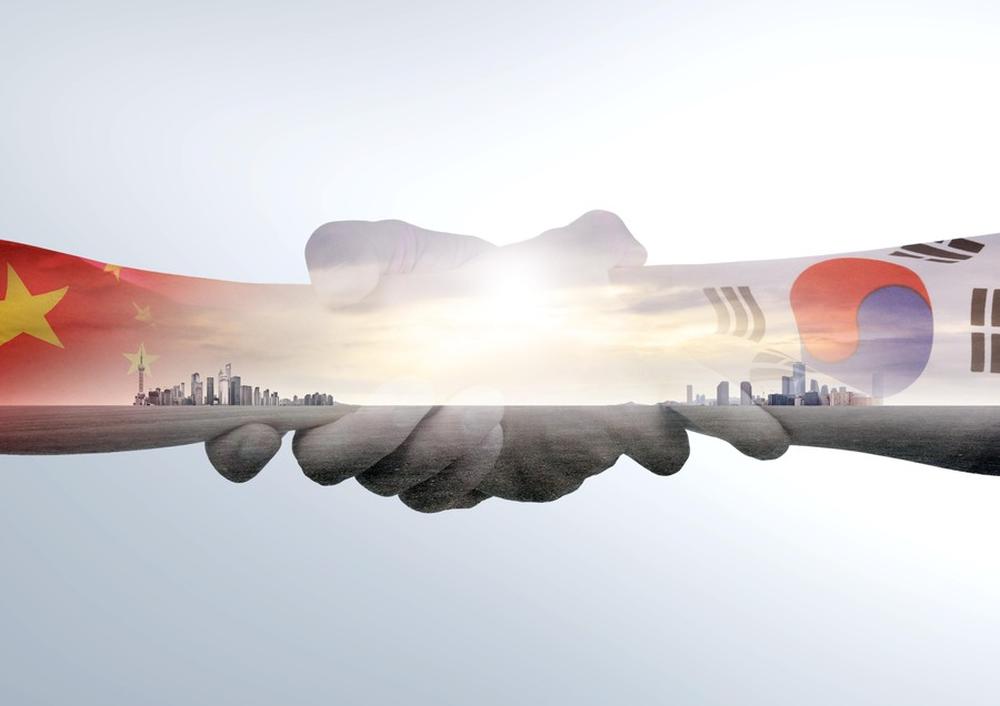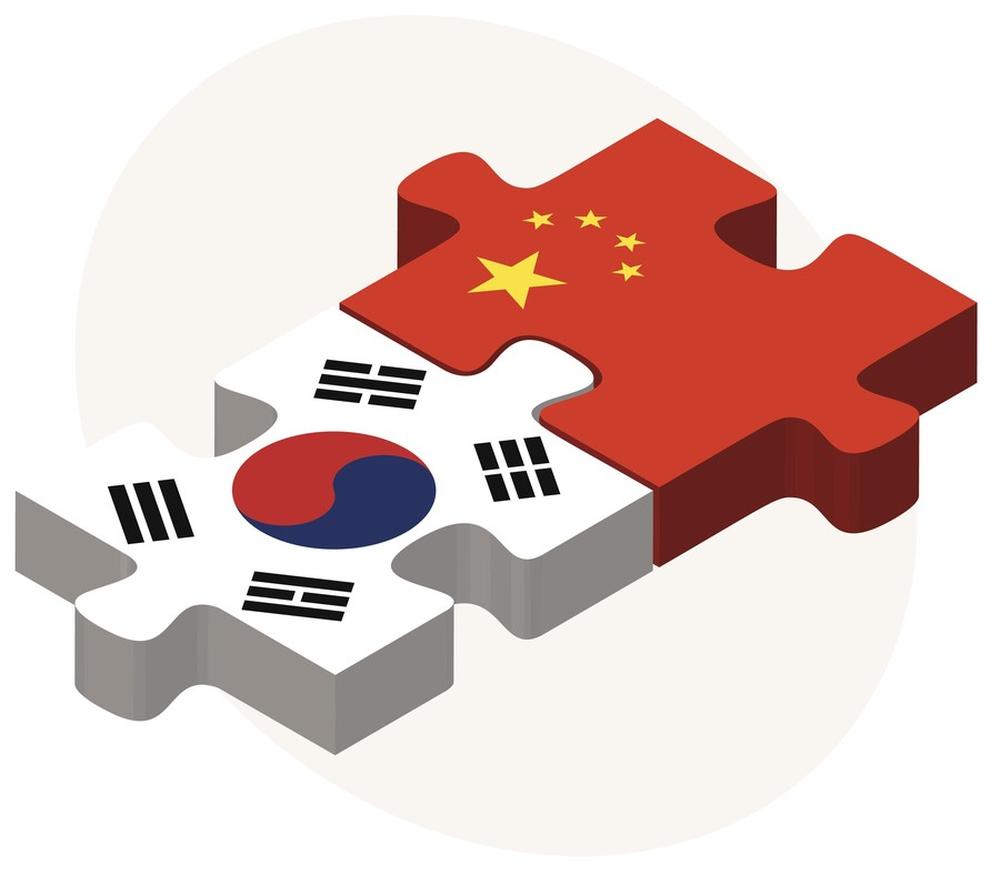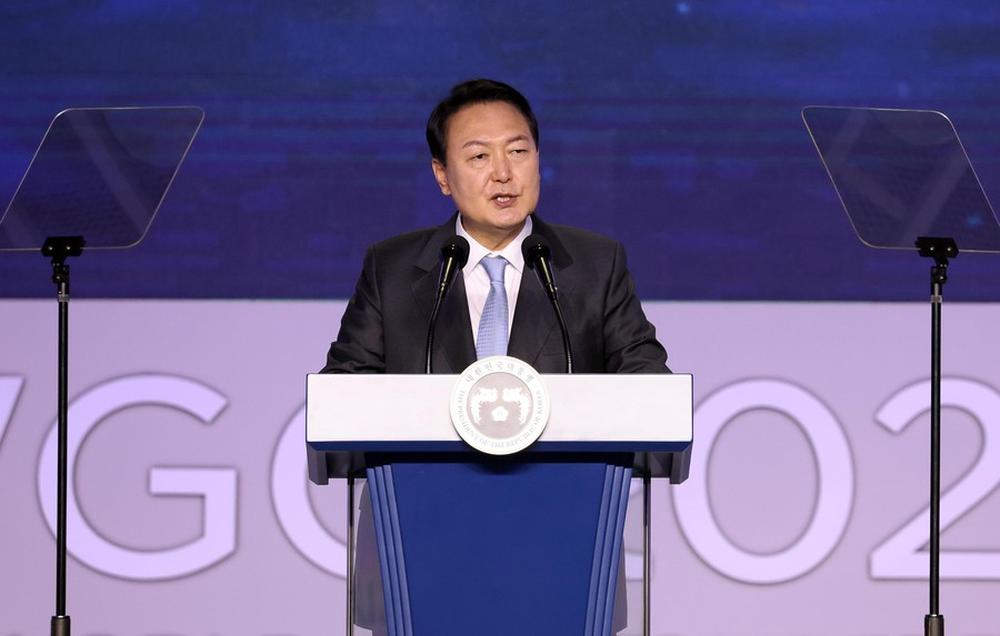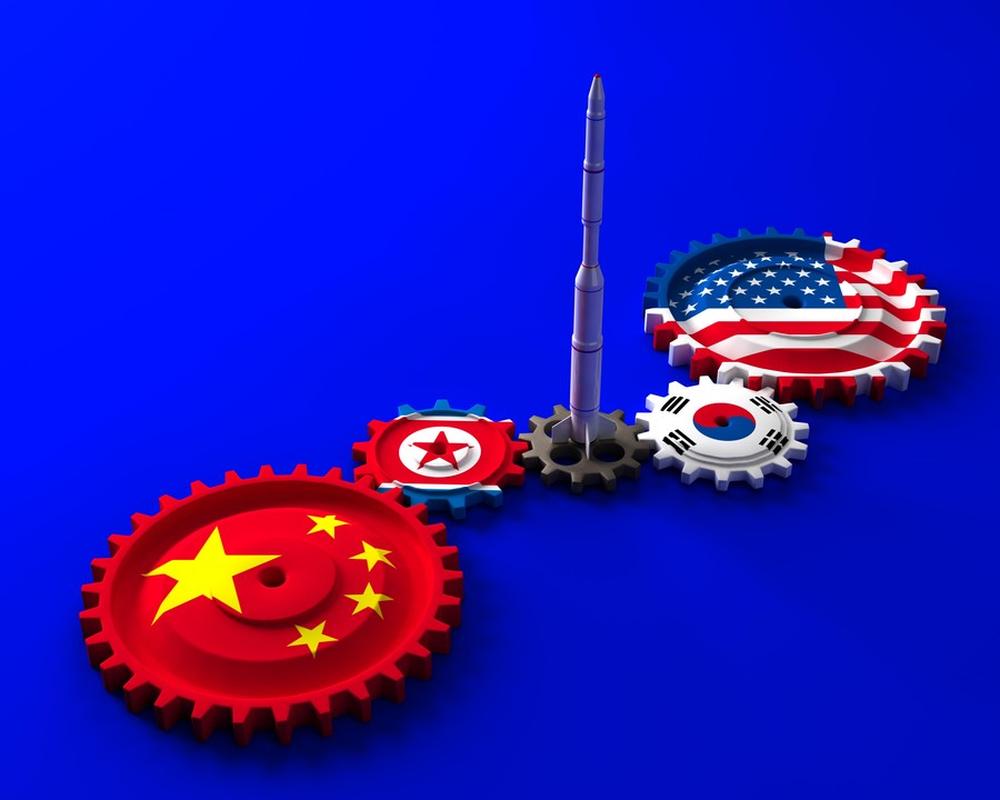- #US
- #Biden Administration
- #South Korea
- #US-ROK
- #Yoon Suk-yeol
- #Yoon Administration
- #Summit
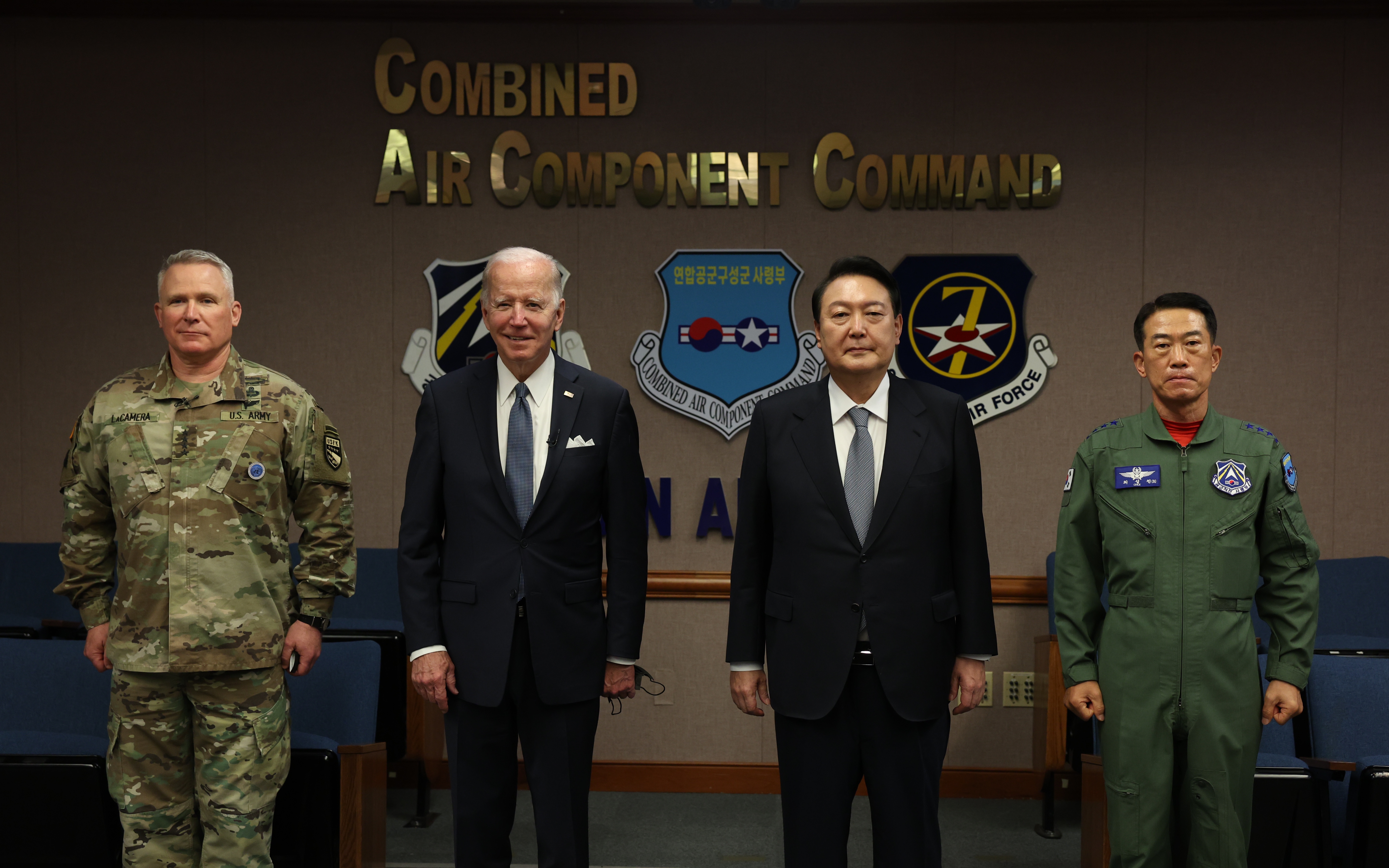
► As the two states work to implement the many tasks outlined in this year’s U.S.-ROK Leaders’ Joint Statement, the alliance will inevitably run into frictions with China in a number of arenas.
► While the growing strategic alignment of Washington, Seoul and other regional partners such as Tokyo is a welcome development, the deepening engagement and coordination among United States and its allies will also create challenges with China.
At the recently concluded U.S.-ROK summit, Presidents Biden and Yoon announced their intention to develop the U.S.-ROK alliance into a “global comprehensive strategic alliance” that focuses not just on issues related to the Korean Peninsula but also the Indo-Pacific region and beyond. Washington and Seoul seem more aligned than ever before on their strategic outlooks and priorities in the region. As the two states work to implement the many tasks outlined in this year’s U.S.-ROK Leaders’ Joint Statement,[1] the alliance will inevitably run into frictions with China in a number of arenas. Beijing has long bristled at the strengthening of relations between Washington and its allies through networks like the Quad and the newly launched Indo-Pacific Economic Framework (IPEF). Beijing claims that these so-called “exclusive circles” spearheaded by the United States and partners are aimed at containing China. This essay will examine three key issue areas in which Washington and Seoul are likely to encounter China-related challenges: enhancing deterrence on the Korean Peninsula, upholding peace and stability in the Taiwan Strait, and advancing the goals of the IPEF. Finally, the essay will discuss the ways in which China is likely push back as the U.S.-ROK alliance moves forward to strengthen deterrence and deepen comprehensive cooperation.
Enhancing Deterrence on The Korean Peninsula
The recent U.S.-ROK Leaders’ Joint Statement indicates that Washington and Seoul will focus on enhancing their combined defense posture and that the United States will reaffirm its extended deterrence commitment to the ROK “using the full range of U.S. defense capabilities, including nuclear, conventional and missile defense capabilities.” Other undertakings listed in the statement include the reactivation of the Extended Deterrence Strategy and Consultation group, and “the expansion of the scope and scale of combined military exercises and training on and around the Korean Peninsula.” Although these measures and exercises are primarily targeted at deterring the growing North Korean missile and nuclear threat, the perception in Beijing is that any strengthening of the U.S.-ROK alliance has direct implications for China’s security interests. This explains why Beijing fiercely opposed the deployment of U.S. Terminal High Altitude Defense (THAAD) batteries to the Korean Peninsula in 2017, alleging that these missile defense systems could be used to spy on and counter China’s strategic assets. Beijing is likely to vigorously protest any moves that are seen as eroding the Moon administration’s “three no’s,” which sought to reassure Beijing that South Korea would not accept the deployment of additional THAAD batteries, enter into a trilateral alliance with the United States and Japan, or join a U.S.-led regional missile defense network.[2] However, given growing interest in Seoul and Washington to strengthen deterrence vis-à-vis North Korea, greater enthusiasm for U.S.-ROK-Japan trilateral cooperation, and deepening concerns about the rapid expansion of China’s nuclear arsenal and capabilities, developments that are perceived by Beijing as hollowing out the “three no’s” are highly likely to materialize in the coming years, and thus frictions with Beijing will be inevitable.
Upholding Peace and Stability in the Taiwan Strait
In the U.S.-ROK Leaders’ Joint Statement, Washington and Seoul reiterated their joint interest in “preserving peace and stability in the Taiwan Strait.” This year’s statement expanded upon the previous year’s by adding that peace and stability in the Taiwan Strait is an “essential element in security and prosperity in the Indo-Pacific region.” The Russian invasion of Ukraine has also heightened concerns about potential contingencies involving China and Taiwan, and added urgency to conversations among the United States and its allies about the need prevent great power aggression in the Indo-Pacific region. As Washington, Seoul, and other like-minded partners move forward to discuss their respective roles and operationalize preparations for contingencies in the Taiwan Strait, Beijing will likely lash out, accusing these states of meddling in its internal affairs and damaging its core interests. The challenge for Washington, Seoul and other partners will lie in striking the balance between simultaneously enhancing deterrence and strengthening Taiwan against Chinese coercion, while also advancing risk reduction and crisis management with Beijing to ensure a hot conflict does not break out in the region.
Advancing the Indo-Pacific Economic Framework
Another arena in which the U.S.-ROK alliance is likely to run into conflict with China is in the advancement of the IPEF. Beijing has criticized the IPEF for being exclusionary in nature and perceives the initiative as a thinly veiled effort to counter China’s economic rise. While the IPEF focuses on setting the rules of the road for the 21st century economy, such as in digital trade, and securing supply chains, China has made clear that it too seeks to cooperate with South Korea on many of the same high-tech issue areas. In Chinese Foreign Minister Wang Yi’s recent conversation with ROK Foreign Minister Park Jin, Wang made clear that South Korea should not decouple with China but rather cooperate on digital trade, AI and other advanced technologies for the sake of “South Korea’s long-term development.”[3] Seoul, as well as other IPEF partners, will likely face challenging choices as they engage with both the IPEF and China, especially in overlapping domains.
Potential Chinese Pressure and Retaliation Measures
As the United States and ROK work to deepen cooperation on the four issue areas discussed above, China may draw upon a range of economic, diplomatic, and military measures to exert pressure on Seoul and Washington. Beijing has already issued veiled threats that South Korea’s economy and prosperity is inextricably tied with China. Beijing could continue to indirectly use its economic leverage by wooing South Korean political factions and businesses who have strong interests in trade and economic interdependence with China to shape South Korean public opinion in ways that are favorable to itself. It can also directly weaponize its economic leverage as it did in 2017 to inflict pain on the South Korean economy, although Chinese economic coercion ultimately failed to achieve its objective at the time and ultimately soured South Korean perceptions of China.
China will also use the “North Korea card,” making the case that Seoul must stay in Beijing’s good graces if it seeks diplomatic progress and peace on the Korean Peninsula. While Beijing has not played a particularly pivotal or constructive role on diplomacy with North Korea in recent years, it could play a spoiler role in a number of ways, including blocking new UN Security Council resolutions and watering down existing resolutions, turning a blind eye to North Korean provocations, and in the case diplomacy resumes, slowing down negotiations on key issues such as an end of war declaration and a framework for peace on the Korean Peninsula.
And finally, Beijing will continue to employ greater military pressure both independently and in conjunction with Russia to pressure the United States and its allies. In 2019, China and Russia engaged in their first joint air exercises around South Korea and Japan, during which South Korean fighter jets fired warning shots at a Russian plane. During President Biden’s recent trip to Asia, Chinese and Russian bombers again engaged in joint exercises in the region and entered South Korea’s air self-identification zone (ADIZ). As the United States, ROK and other U.S. allies step up military activities in the Indo-Pacific, it is likely that China and Russia will also increase their individual and joint military activities. This will lead to greater strains on the militaries and resources of the United States, ROK and Japan, and increase the potential for crises in the region.
To conclude, while the growing strategic alignment of Washington, Seoul and other regional partners such as Tokyo is a welcome development, the deepening engagement and coordination among United States and its allies will also create challenges with China. Finding ways to enhance deterrence to disincentivize Chinese aggression, while also pursuing crisis stability through constructive and regular diplomatic interactions with Beijing will be critical for upholding peace and stability in the region.
[1] United States-Republic of Korea Leaders’ Joint Statement, May 21, 2022, https://www.whitehouse.gov/briefing-room/statements-releases/2022/05/21/united-states-republic-of-korea-leaders-joint-statement/
[2] On the “three no’s,” see: https://english.hani.co.kr/arti/english_edition/e_international/817213.html
[3] For instance, see PRC readout of this meeting: https://www.mfa.gov.cn/wjbzhd/202205/t20220516_10686692.shtml.
Patricia M. Kim is a David M. Rubenstein Fellow at Brookings and holds a joint appointment to the John L. Thornton China Center and the Center for East Asia Policy Studies. She is an expert on Chinese foreign policy, U.S.-China relations, and U.S. alliance management and regional security dynamics in East Asia.
